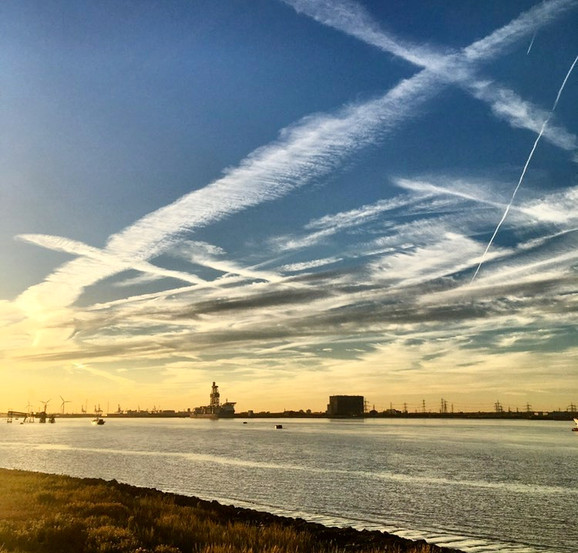A Humpback in the River Thames
- Harry

- Dec 31, 2020
- 3 min read

Just decades ago, the River Thames was so heavily polluted that if you went in it, you were literally holding your life in your hands. Thanks to relentless conservation efforts, it has now almost been reverted back to how it was a Century ago. Now Seals, sharks; even Seahorses and migrating shoals of Eels have made it their home, with over 3,000 Seals now living along the Thames. Over the years, much larger creatures have lived in the Thames, with several records in recent years of Whales temporarily living in it. Some just got confused or curious and stayed in the Thames for a while then left, but sadly for some the murky river was the last thing they saw.
One of these whales was a beautiful Humpback, who arrived in October 2019. People watching it identified it as a female, and she was nicknamed Hessy. People were concerned for her welfare from day 1 though, it’s scarce to see any of the Great Whales in Britain outside of N Scotland and Ireland-even a Humpback, one of the more widespread.

Humpback Whales are highly social creatures, and with brains three times the size of ours they’ve learnt to communicate with each other through sound and movement, living in complex social groups together. They’re considered the most acrobatic of the Great Whales, along with some of the Minke Whales, and put their intelligence to good use, in hunting especially, where groups bellow rings of bubbles to scare their prey into a tightly knit ball which is pushed up to the surface and engulfed in their huge mouths.

So, seeing Hessy on her own sparked concerns for her health. Like humans, Cetaceans (whales, dolphins and porpoises) suffer from mental health problems, like severe anxiety and depression, which can lead to worrying changes in their behaviour. But after being monitored for a while, she seemed perfectly healthy, and was acting naturally, slowly making her way up-river.
It must’ve been an incredibly magical experience to be able to walk just outside your door and get to see a gigantic, gleaming black, armoured body, of a Humpback whale right on your doorstep though, coming up and spouting a plume of water then diving into the blackness.
Hessy's temporary home-these pictures taken by Amy Beeching.
And that’s what she did for the next few days. Slowly but surely, she swam up the River, until one day, to everyone’s relief, she turned back the way she’d come. But then back again, then again, and again. This was very worrying. Was she lost? Maybe confused by the loud noise? Was she not used to such a confined space? Could she be malnourished? Panic rose and rescuers were put on standby in-case anything happened. But after more research, she was still completely healthy, probably just confused, and would soon find her way back and be alright.
Until one morning her gigantic black corpse was discovered dead at the side of the river. She was taken away and a post-mortem conducted. It revealed the previous night she had been struck in the head by a large metal boat, so hard it had killed her. It also showed she was only small, probably lost on the annual Humpback migration from Norway to South Africa and would’ve found her way to the open ocean again given time.
Sadly, this mirrors what happens in our seas every day. Because whales have been in the seas much longer than boats, they don’t recognise that the noise of one approaching is a threat, and most go up to investigate, colliding and dying due to brain damage, shock or blood loss. And even if they did recognise it, the noise would muffle their warning cries, so they’d be unable to warn each other, dying regardless.

Every year, roughly 1,200 whales are logged as having died from ship collisions. But, when a whale dies, it sinks to the bottom of the ocean. Out of sight, out of mind. As a result, only those that wash up are logged. In actuality, scientists estimate that over 25,000 whales could be killed each year from collisions, equivalent to roughly 27 schools of people. Whales have no defence or fear of boats, so we need to change if they’re going to survive-on my next blog post I talk about how you can help and why they’re worth saving.









Comments